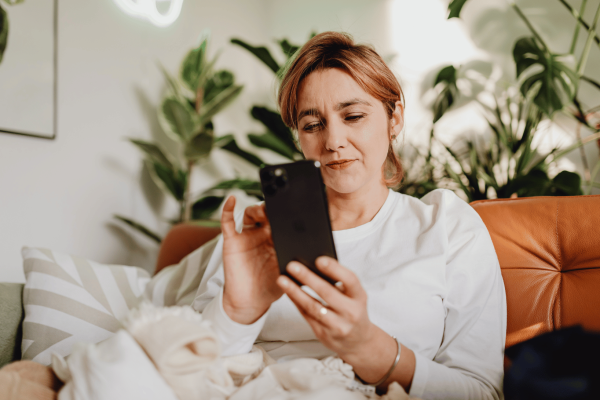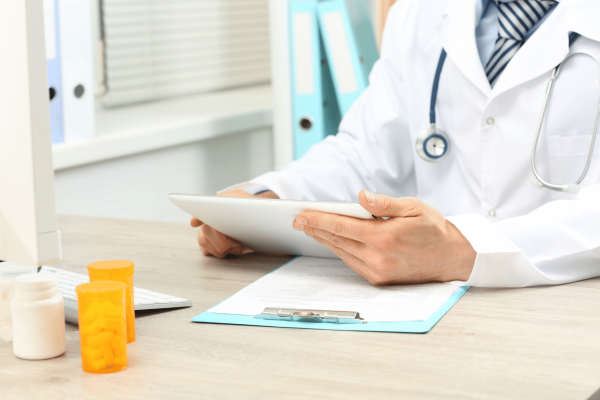The year is 2018. A sponsor for a new anti-arrhythmic medication and a CRO meet to discuss the strategy for a Phase 3 national clinical trial on the all-in-one system, TrialKit, that integrates other peripheral systems. What would have taken four to six years to complete will now take about two years. The trial has no paper forms and no data entry staff. The trial objectives involve efficacy measurements as well as precise vitals and lab measurements during the trial.
Trial feasibility and potential participant populations have been identified to include 10 lab values, three genetic markers, and previous diagnosis and interventions along with age and other vitals. Thirty EHR systems containing over 100,000 patients each has been searched over a period of 3 weeks to obtain a “short” list of potential participants that meet all the inclusion and exclusion criteria using EHR to EDC interoperability software. This national list is auto-populated into a potential participant file. Regional sub-principal investigators are now able to approach each potential participant via email about the trial using an IRB approved message.
The message to potential participants includes an educational video on the trial and the investigative product. The video and written information provide a multifaceted approach to achieve true understanding by the potential participant. The email also contains a link with instructions to email or call with any questions about the trial. The potential participant can then click a link to initially enroll as a potential participant. This e-form is then compiled into a go/no go filing system in which the clinical research staff can then review the potential participant and all pertinent information. This is the first point at which clinical staff is employed in the potential participant recruitment process.
Consent is then scheduled in TrialKit eConsent. The process includes the potential participant using BYOD (bring your own device) to read the consent, then engage in a one-on-one video conference to fully understand the consent and the trial. During this interview and consent process the potential participant will be recorded for visual and audio acknowledgement. The video is then saved as part of the potential participant record to include geolocation and date/time stamp.
After the consent process, the potential participant under goes new labs and a medical review before being randomized in the trial. The labs are collected from the participant using an at-home blood collection device by Seventh Sense. The device is sent to Labcorp facilities with digital results, then sent to the participant record via a secure, regulatory compliant data transfer using an assigned alphanumeric ID.
The results and participant history is reviewed by a local, boarded cardiologist and internal medicine physician and then the participant has a one-on-one telemedicine consultation with the physicians using the VSee platform to go over all the details of the history, findings, and possibly re-consents the participant. The physician report and recommendation for the trial is then sent to the research coordinator who enrolls and randomizes the participant. At this point, a total of 1.5 hours of physician time, 2 hours of research coordinator time, and 2 hours of research associate time has been involved in the complete process to date.
The participant has been identified, engaged, qualified, consented and randomized to the trial and is now ready to go active in the arm to which they are assigned. During this time, the trial sponsor has created two dosages and one control (placebo) investigational product. Based on previous trials, the tolerance and safety has been proven, and there is little or no risk an adverse event or serious adverse event is expected during this phase of the trial. The trial sponsor sends investigational products to the distribution pharmacy; or the pharmacist then uses an iPad to scan incoming lots of investigational product to clearly identify serial numbers, lots, and date. Using the iPad’s camera and UPC/QR reader, the data is automatically uploaded to TrialKit and confirmed by the pharmacist, and also remotely by the sponsor’s monitor. In this trial, the sponsor has chosen to use a microchip for each tablet in the trial. This microchip, made by Proteus, contains an FDA cleared biodegradable microchip that can identify both the time and compliance of taking investigation product with an accuracy of 97.3%. This data is collected from Proteus Digital Health’s app, then transferred digitally and securely to the clinical trial software which automatically populates the eCRF for that specific participant. In near real-time, the investigator and sub-investigators, as well as the monitor, can log onto the trial software system to review compliance to the protocol and the trial SOP’s.
Due to size and vast geography of this trial, the participants shall be educated and instructed on the use of the investigational product during the trial. They will also learn how to use the EKG, the pulse function on the Apple Watch, and how to enter data into the digital diary other on another device. These educational videos shall be followed by a series of test questions to verify the participant understands all responsibilities and aspects of the trial. The test question results shall be forwarded to the investigator and the monitor in a digital format as a simple pass/fail result. These results shall also be incorporated into the participant’s file.
After the participant has completed the digital education series and successfully completed the knowledge tests, they attend a follow-up video conference with the trial coordinator and associates to answer any final questions and verify understanding of compliance and the requirements for digital diary. At this point, the participant is ready to go live in the trial. Behind the scenes, the investigator and sub-investigators review all dispensed digital records for any discrepancies or missed steps and shall address them accordingly. During this period, the sponsor’s monitor shall have access to all information to review for compliance and quality control.
The participant is now ready to start the taking the investigative product for the arm to which they were assigned for the trial. The investigator signs off on the participant’s file digitally, and then forwards it to the pharmacist for appropriate distribution of the investigational product. Using a LogTag Recorder, the investigational product is not only tracked by the courier service but also using this device to verify time and temperature (if required). Upon receiving the investigational product, the participant will have to use government issued ID to identify themselves and sign for the package. This digital confirmation from the courier shall be sent via email and logged digitally into the trial’s software system. The system shall then automatically send out an RSS feed requesting the participant scan both the UPC/QR on the investigational product bottle and the LogTag UPC. This information shall be automatically loaded into the participant file in TrialKit for compliance.
The trial coordinator is then electronically alerted to the participant receiving the investigational product. The trial coordinator calls the participant to go over any questions about compliance during the trial and addresses any issues. The participant, per protocol and SOP’s, starts the trial drug. Using their own device, the participant logs in to the app and follows directions to scan the first dosage pill. After receiving a positive go-ahead from the app, the participant takes the investigation product and also confirms in the digital diary that they have in fact taken the pill. In the background, investigators, coordinators, pharmacists and sponsor monitors can all view this information in near real-time for safety and compliance.
In this particular trial, the participant has agreed to use Apple Watch to monitor pulse rates 24/7 and also to use a digital ECG made by AliveCor per protocol three times per day. The ECG results are automatically uploaded to Apple Health, and then downloaded automatically via an API to TrialKit and saved in the participant’s file. If an abnormal pulse rate or ECG is realized by the software, an RSS feed is sent to the clinical research team as a possible AE or SAE. The clinical research team can respond within a minute to this data and provide any needed medical attention via telemedicine, ambulance, and first responders. In the case a participant needs to go to ER (ED), all vitals, trial history, investigational product can be digitally forwarded to the receiving ER (ED) team before the participant arrives. TrialKit can also be designed to auto-populate specific forms for regulatory recording of AE and SAEs for compliance purposes.
During normal course of the trial, the participants shall meet with boarded cardiologists via telemedicine consults as per protocol to review the participant’s general well-being and experience with the investigational product and log directly into an eCRF. At specific points during the trial, the participant will be required to visit a lab for a 12 lead ECG and other required imaging per protocol. These lab-created EHRs can be uploaded and translated to TrialKit using EHR to EDC technology and auto-populate required fields with the appropriate data in the eCRF and then stored in the participant file. It will also populate the invoicing form, using ICD 10 codes, for permit billing to the sponsor.
In the back-end of the clinical trial software, clinical trial personnel time and tasks are logged into an accounting form that then auto-populates an invoice for the sponsor. Reports can also be auto-generated as tasks are completed and forwarded to the sponsor or investigator. In addition, every login and every keystroke creates a digital audit trail then can easily be reviewed by regulatory agencies or the sponsor at any time. Mid-trial reports can easily be generated at any time to provide the sponsor what exact data on how the trial is progressing.
Upon completion of the trial, all investigational products can be tracked digitally by pill, bottle, and package from the participant to the pharmacist and then eventually to the sponsor. At the conclusion of the trial, a data lock can easily be completed by the investigator during which all data can be analyzed and reports created. All trial data can be collected and integrated into a NDA or other regulatory documents for submission and approval. The trial closeout is expedited by using all the digital tracking of the investigational product, as well as automated and auto-filled reports and invoices. Finally, after the closeout, the data can be securely stored for the complete trial in multiple locations that are FDA and regulatory compliant for decades if need be – but offering easy access to all data to any regulatory or sponsor requests.




